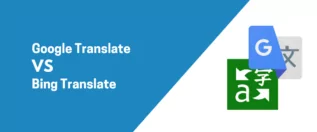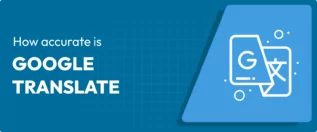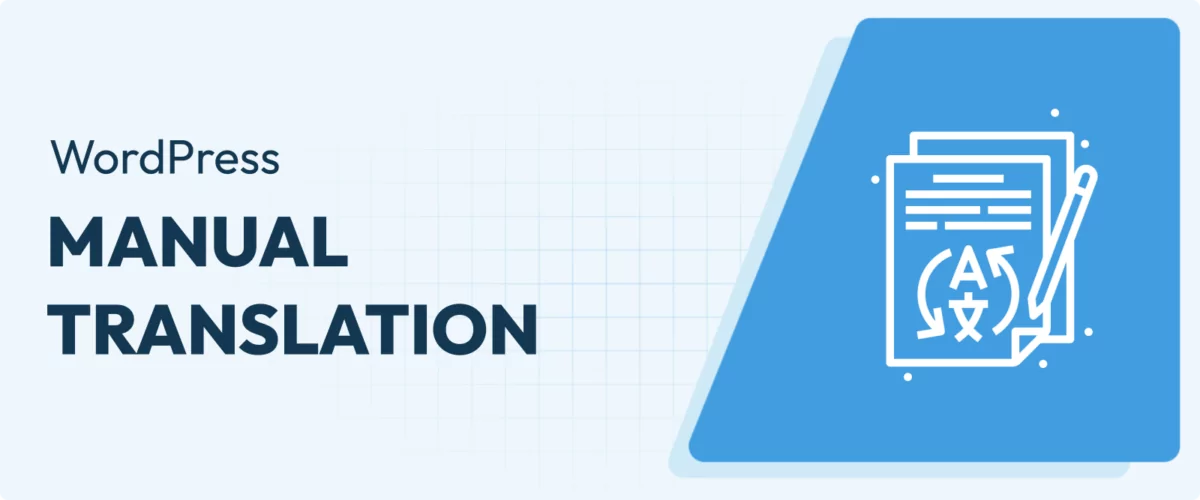
In this post
By now, all of us are aware that the world is becoming more and more interconnected. So, having a website that speaks to multiple audiences in their own languages is crucial. You may have seen the phrases “manual translation” and “automatic translation” roaming around the internet for quite a while, in various contexts. But what does each really mean and which one is the right choice for you?
In this article, we will discuss manual translation in relation to automated translations in a seemingly AI dominated world. We’ll go over some expected trends regarding translation methods and see when does one come before the other. We will also touch upon some of the most valuable advantages of manual translation and some recent statistics of AI in language translation.
Whether you plan on using a WordPress manual translation plugin or outsourcing your translations to professionals, we’ll help you understand why human translators are essential in providing high-quality, culturally adapted content that really resonates with audiences worldwide.
What is Manual Translation?
Manual translation is when a real person, an actual human translator, takes the time to translate content from one language to another. When it comes to WordPress manual translation, this could mean hiring a professional translator to convert your website’s content. Some examples could be blog posts, product descriptions, or even entire pages. The goal? To make sure that people from other countries feel just as connected to your message as your original audience does.
On the other hand, automatic translation, also known as machine translation, is when software or an AI system translates content from one language to another without human involvement. Now, these systems are getting better at understanding language. But they sometimes miss details like cultural context, tone, and complex expressions. As a result, automatic translations, compared to manual translations, can sometimes sound forced or unnatural.
What Are The Benefits of Manual Translation?
When it comes to translating content, especially for your WordPress website, manual translation offers several advantages over automatic methods. Here are some key benefits:
- Accuracy: Human translators carefully consider context and tone to ensure nothing is lost in translation.
- Cultural Sensitivity: Manual translators can adapt your content to fit cultural norms and preferences.
- Natural Tone: A professional translator guarantees that your text flows naturally, preserving the intended tone and style.
- Industry-Specific Language: If your content involves legal, medical, or technical terms, manual translators ensure they’re used correctly.
- Better User Experience: Users are more likely to engage with your content as it feels tailored specifically to their language.
Of course, these are just a few of the benefits of manual translation. Besides these, manual translation services ensure your WordPress site offers a polished, professional, and culturally relevant experience.
But is Manual Translation Still a Thing? And Why?
With the rapid improvements in AI and machine translations, you may be wondering whether manual translation even matters in 2025.
Even with automation at an all-time high, manual translation will still play an extremely vital role for businesses that want quality, accuracy, and cultural relevance. But, one thing is certain: AI translation engines do continue to improve, and businesses are getting more and more inclined to give it a shot.
Some of the latest statistics when it comes to AI in the global language translation market show that this market is expected to grow by 22.3% until 2033.

However, as the study quotes “… the AI in language translation market also presents its fair share of challenges. One of the primary challenges is the need for vast amounts of high-quality training data. AI translation systems rely on large datasets to learn language patterns and improve their translation accuracy. Acquiring and curating such datasets can be time-consuming and expensive, especially for languages with limited resources”.
Despite the progress made with AI advancements, there are still people who opt for human translation because of its accuracy and depth. Unlike automatic translation, manual translation offers a human touch that is essential for capturing cultural nuances, tone, and context, things that AI sometimes struggles with.
On the other hand, automated translation will suit just fine for bulk tasks such as rapidly translating huge volumes of simple content, but when quality and context are key, manual translation is often the better choice.
So, to actually answer the question: yes, manual translation is definitely still a thing in 2025. In fact, it remains the go-to solution for a lot of people seeking to deliver high-quality, culturally relevant content that truly resonates with a diverse range of audiences. While AI undeniably has its advantages in speed and volume, when accuracy, tone, and context come into play, it’s hard to find a better solution than manual translation.
Another thing to take into consideration here is the fact that you can actually use both approaches at the same time. And this is, to be fair, the best way to go about it.
By using automatic translation at first, let’s say to create a baseline for your translations, and then reviewing those translations manually, you get the best of both worlds. You save time by letting AI handle most of your translations, and then you only go in to edit any mistakes or specific things you’d prefer to change manually. You can do this yourself if you’re a native speaker, or you can hire a professional translation agency or a freelancer to help you out with their expertise.
How Do I Manually Translate a WordPress Website?
Ok, so if you’re still here, I’m going to assume you’ve already made up your mind. You need manual translation in your life. And now you want to learn how to actually do it.
Well, if you work with a WordPress site, I have a pretty cool tool to show you, our tool. There are a lot of translation plugins out there, but TranslatePress is the most intuitive to use for manual translation due to its visual translation editor.
So, for this tutorial, we will be using TranslatePress, a WordPress translation plugin that is fast and very easy to use for anyone.
Install and Activate TranslatePress
You can find the plugin by going to Plugins → Add New within your WordPress dashboard, then simply type ‘translatepress’ in the search bar.
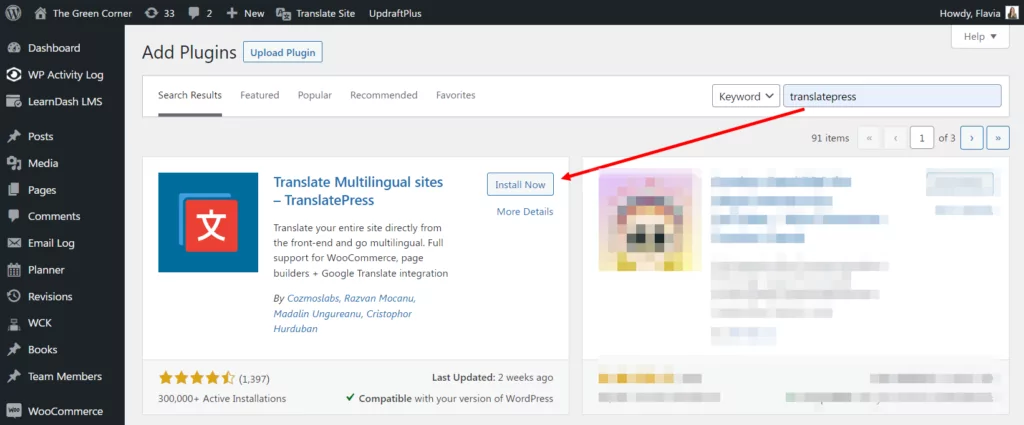
Once you find the plugin, click Install Now then make sure to activate it.
After this, your plugin is ready to use. Simple, right?
Set Up Your New Language(s)
The next step is to set up the preferred additional language that you want your website to be available in.
To do so, navigate to your WordPress admin interface and hover over Settings. Next, click on TranslatePress. In the General section, under the All languages section, you can choose the preferred language for your banner. After that, click Save Changes at the bottom of the page.
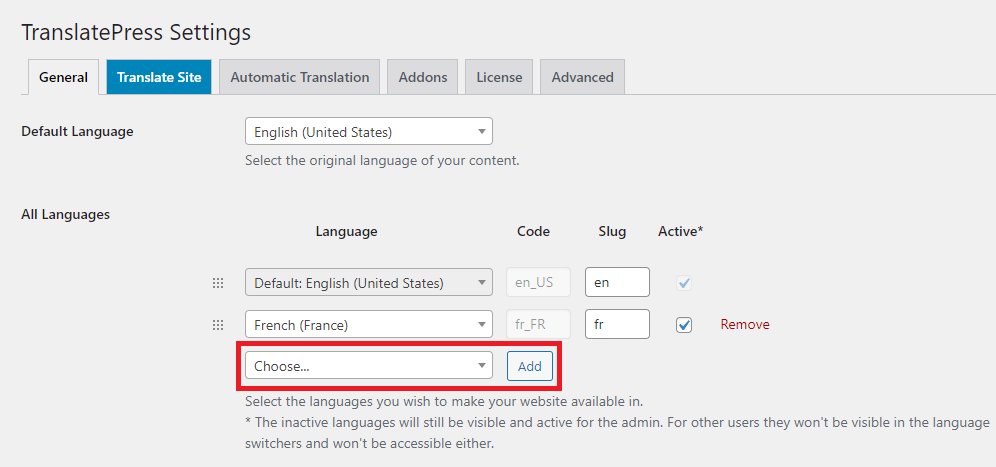
The free version of the plugin limits you to only one additional language on your website. If you wish to have more freedom when it comes to that, the premium version of the plugin would be the solution for that.
Manually Translate Content
Now that everything is set up and ready to go, it’s time to start the manual translation of your website.
👉 Note: If you want to take my advice and create your baseline translations automatically, you can follow this tutorial here which explains all the ways to do automatic translation.
Next, whether you want to edit previously created automatic translations or are just starting up from scratch manually, here’s your walkthrough.
You have two options to start manual translation. You can either click on Translate Site within the settings of the plugin or use the Translate Site option in the WordPress admin bar. You can also use the admin bar button from the front end of your site.

By clicking on that, you will be redirected to the editor page. Here, you will see the screen divided into preview mode on the right and translation tools on the left.
To translate content from your page, begin by choosing the specific string from the drop-down menu on the left sidebar or by selecting the pencil icon next to the content in the site preview. This will display the original text alongside translation fields in the left sidebar. Manually enter your translated text into the appropriate boxes and click Save once you’re done.
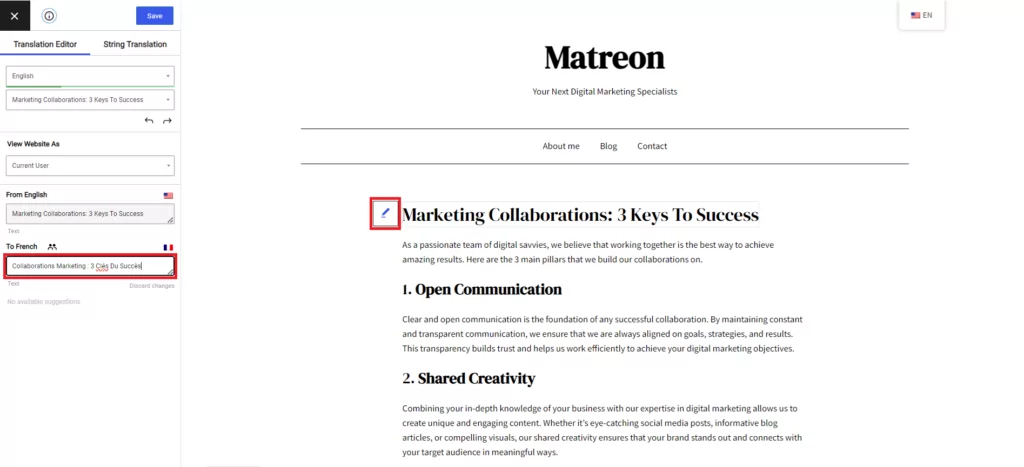
You can repeat the process for every piece of content that you have on your website, even if it includes images, texts or other elements.
Once you have translated everything, make sure to save your progress.
Assign Translator Roles
If you’re someone who likes to handle everything yourself but just can’t find the time, professional manual translation services might be exactly what you need. By handing this task over to experts, you free up valuable time. Plus, your content remains accurate, culturally relevant, and tailored to your audience without sacrificing quality.
Regardless if you are thinking about collaborating with freelancers or finding an agency for certified translations, good news is that TranslatePress can help you in this process as well. With the premium version of the plugin (Business or Developer), you can create or allow existing users to translate the site without admin rights. The translators will be able to translate the website directly from the front end, eliminating the need to navigate the WordPress back end, site builders, or meta boxes.
To do that, simply install and activate a premium version of the plugin, as mentioned above. Then, go to Settings → TranslatePress in your WordPress dashboard, and then navigate to the Addons tab.

In the Pro Add-ons section, hover over to Translator Accounts and click Activate.
Next, you can create a new user with the Translator role by going to Users → Add New.
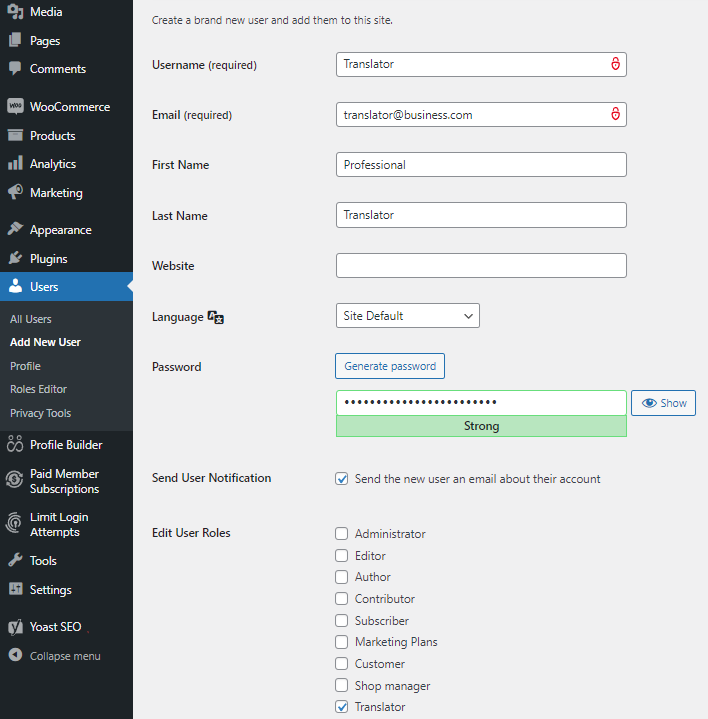
Input all the details for the user and assign them as a Translator under the Edit User Roles section.
With your provider now granted access to your website’s content, you can rest easy about data privacy. Like this, they will only be able to access the TranslatePress translation interface, without the back end of your site.
Check Your Translations
Lastly, make sure everything is displaying and functioning correctly on your website. Use the Language Switcher that’s already implemented in one of your website’s corners and check if everything’s looking right.
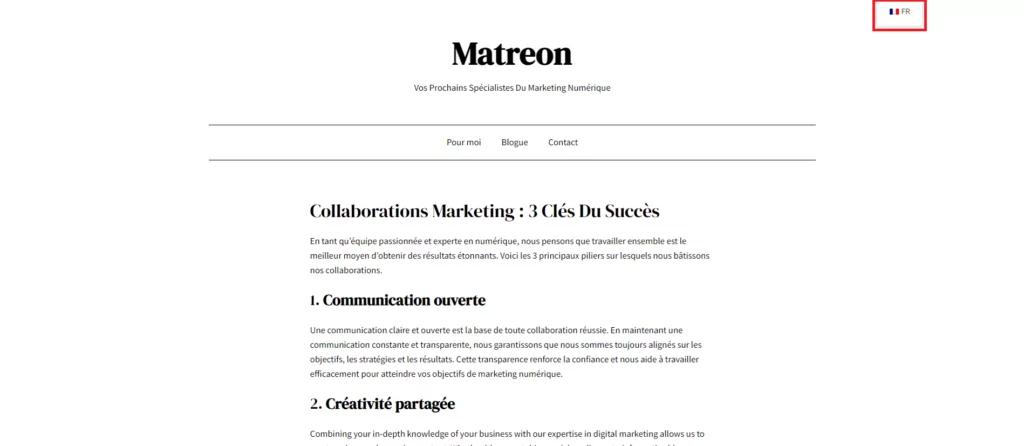
That’s it! You have successfully used manual translation to expand your target audience and increase user experience on your website.
Give Manual Translation a Go
As the need for tailored information increases, it is certain that manual translation will continue to be popular in 2025. Companies and website owners are realizing more and more how important it is to have accurate translations in order to improve user experience and nurture confidence.
By opting for manual translation services, you not only elevate the quality of your content but also create a more engaging experience for your international users. Whether you’re looking to expand your reach, or simply want to connect with a broader audience, embracing manual translation could be the key to improving your website’s results.
Give manual translation a go and start seeing positive results in engagement and loyalty as your content resonates across cultures and languages.
